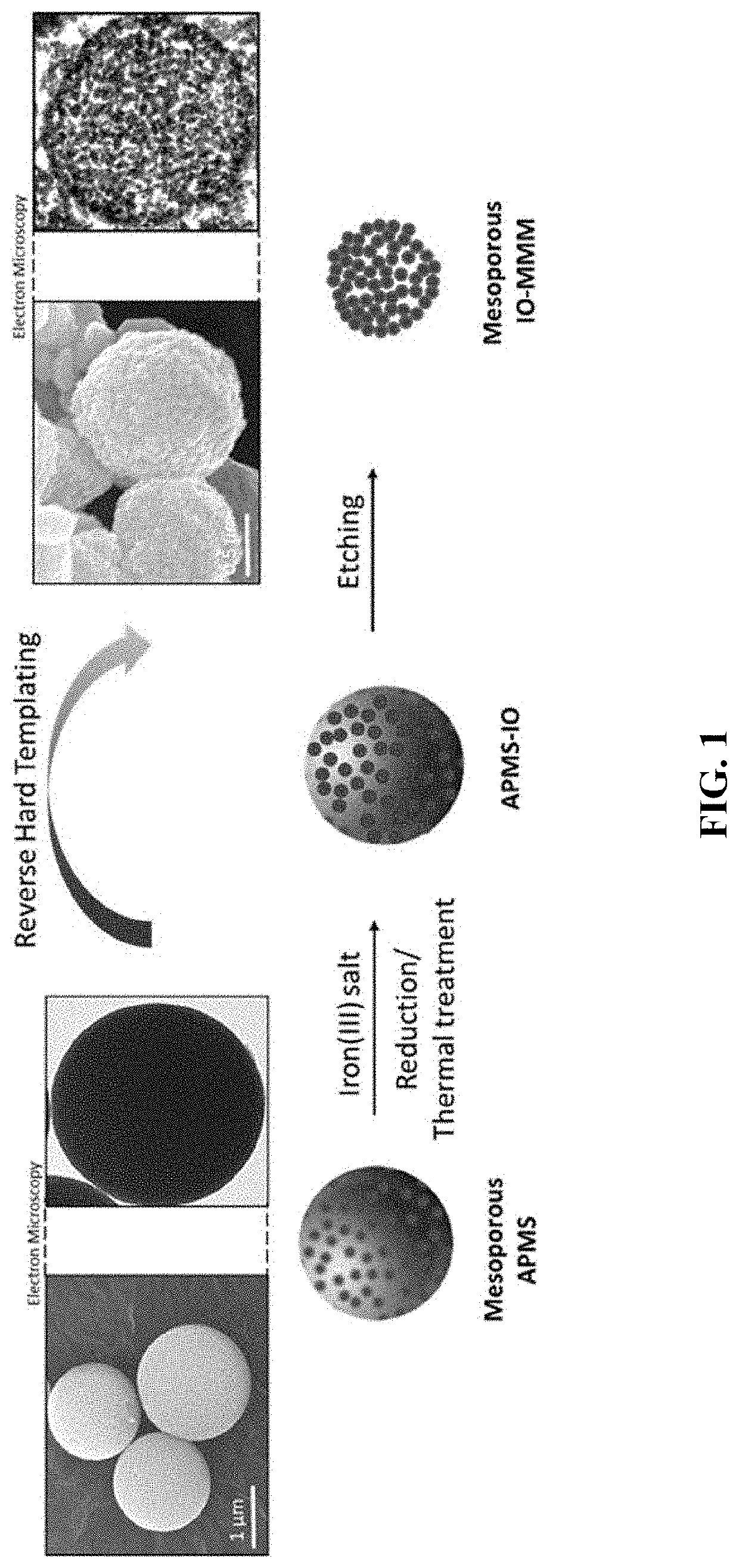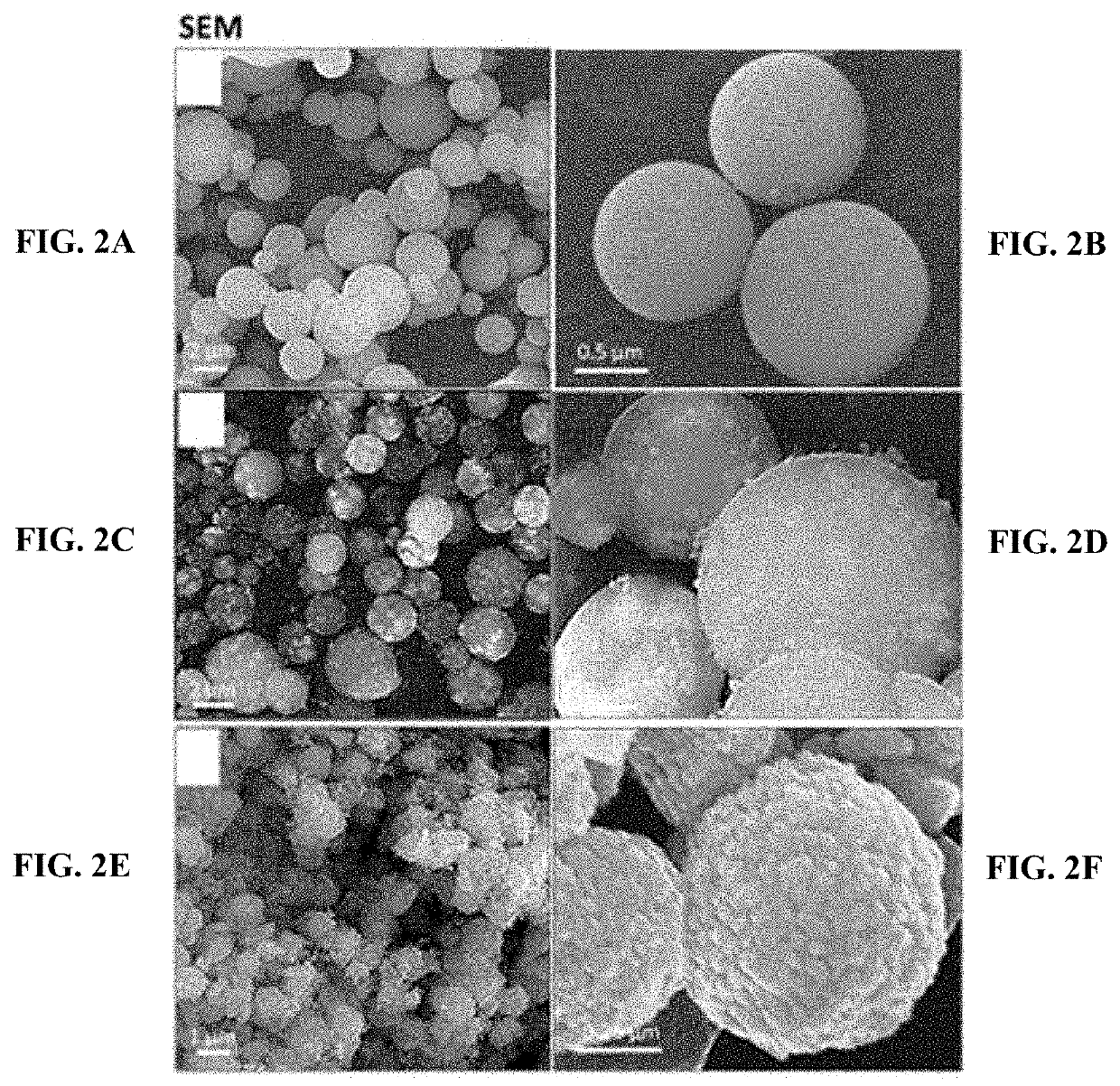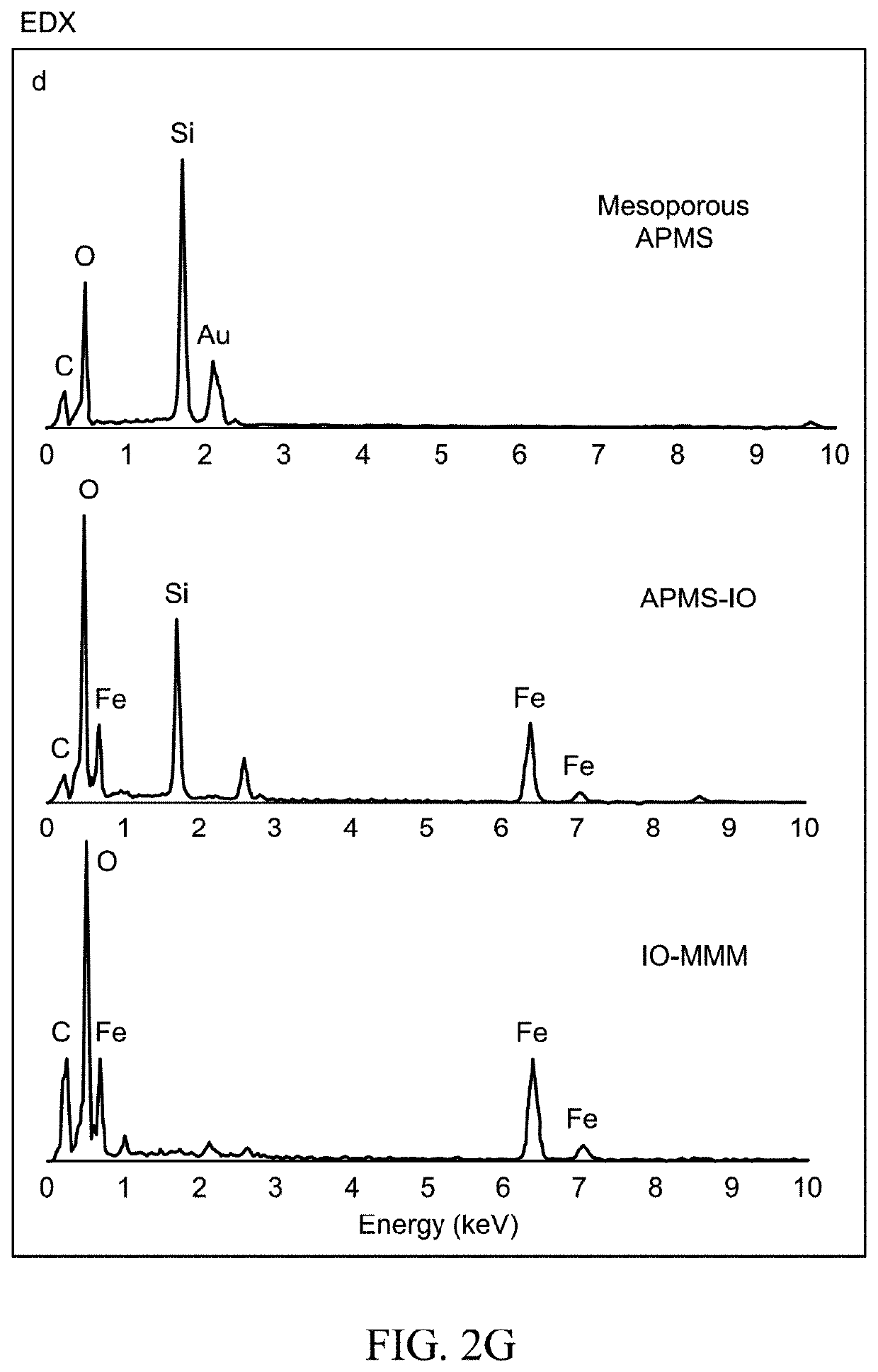Iron oxide mesoporous microparticle drug carrier
a technology of iron oxide and mesoporous iron oxide, which is applied in the direction of capsule delivery, organic active ingredients, non-active ingredients of pharmaceuticals, etc., can solve the problems of long-standing, formidable, and complex process of cancer treatment, and the means of synthesizing high-quality mesoporous magnetic iron oxide materials with large surface area and pore volume remain elusiv
- Summary
- Abstract
- Description
- Claims
- Application Information
AI Technical Summary
Benefits of technology
Problems solved by technology
Method used
Image
Examples
example 1
Results and Discussion
Preparation and Characterization of IO-MMMs
[0146]Fabrication of IO-MMMs was achieved based on a modified reverse hard-templating nanocasting methodology as outlined in FIG. 1. The first steps involve the production of the hard silica APMS template containing unique 3D pore-connected network and average pore size diameters of ˜4-6 nm prepared according to previous work. See El-Boubbou, K., Schofield, D. A. & Landry, C. C. Enhanced Enzymatic Activity of OPH in Ammonium-Functionalized Mesoporous Silica: Surface Modification and Pore Effects. J. Phys. Chem. C 116, 17501-17506 (2012); and El-Boubbou, K., Schofield, D. A. & Landry, C. C. Enhanced Enzymatic Thermal Stability and Activity in Functionalized Mesoporous Silica Monitored by 31P NMR. Adv. Healthc. Mater. 1, 183-188 (2012), each incorporated herein by reference in their entirety.
[0147]In situ reduction of iron(III) precursors during the impregnation process, followed by thermal treatment under an inert atmos...
example 2
Magnetic Behavior of IO-MMMs
[0152]Due to the intrinsic magnetic properties of iron oxide, one of the key advantages of the designed IO-MMMs is their potential use as magnetic imaging probes, and for magnetically-triggered drug delivery and clinical hyperthermia. See El-Boubbou (2018); Lu et al. (2013); and Benyettou et al. (2016). Magnetic resonance imaging has become the ideal imaging modality to test the biodistribution of magnetically-labeled cells and to monitor their fates noninvasively. Furthermore, human tissues are transparent to magnetic field, making the use of an external magnet an alternative and powerful approach to overcome limitations of light-enhanced or photo-responsive drug delivery. It was found that IO-MMMs can be easily separated by a magnetic force from their water dispersions within a few minutes, signifying the magnetic characteristics of the mesostructures (FIG. 4F). Furthermore, to test the capabilities of IO-MMMs to label cells, the response of IO-MMM-tagg...
example 3
Drug Loading and Release
[0153]To test the utilization of IO-MMMs as drug carriers, the drug loading of two well-known hydrophilic chemotherapeutic drugs Doxorubicin (Dox) and Daunorubicin (Daun), and a hydrophobic hormonal anticancer drug Tamoxifen (Tam) was investigated (FIG. 5B), and their pH-dependent release in vitro was studied (FIG. 5A). Two different drug formulations (i.e. Dox@IO-MMM and Daun@IO-MMM) along with a combinatory Daun / Tam@IO-MMM formulation were employed. Nowadays in clinical practice, combination chemotherapy is emerging as an important protocol to enhance the therapeutic effects and reduce systemic side toxicities. For instance, Tam is typically used as hormonal therapeutic anticancer drug, in combination with other chemotherapeutic drugs, for the treatment of both early and advanced estrogen receptor-positive breast cancer. See O'Regan, R. M. & Jordan, V. C. The evolution of tamoxifen therapy in breast cancer: selective oestrogen-receptor modulators and downre...
PUM
| Property | Measurement | Unit |
|---|---|---|
| Temperature | aaaaa | aaaaa |
| Length | aaaaa | aaaaa |
| Length | aaaaa | aaaaa |
Abstract
Description
Claims
Application Information
 Login to View More
Login to View More - R&D
- Intellectual Property
- Life Sciences
- Materials
- Tech Scout
- Unparalleled Data Quality
- Higher Quality Content
- 60% Fewer Hallucinations
Browse by: Latest US Patents, China's latest patents, Technical Efficacy Thesaurus, Application Domain, Technology Topic, Popular Technical Reports.
© 2025 PatSnap. All rights reserved.Legal|Privacy policy|Modern Slavery Act Transparency Statement|Sitemap|About US| Contact US: help@patsnap.com



